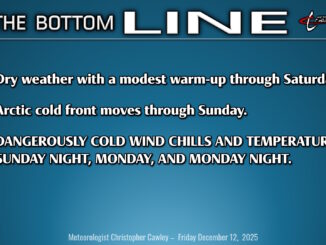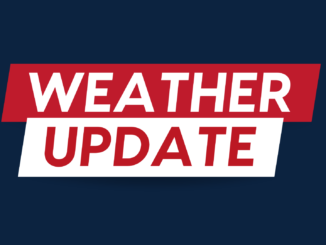
Every pay period, (based on a two-week pay period) we are suggesting items to pick up for your emergency kit in the event of a hurricane. By now you should have your water-tight tote. As we go further into hurricane season, we will regularly remind you to purchase extra batteries for your Emergency Supply Kit.
So, here’s your checklist thus far:
A water-tight storage container with a lid.
A battery powered radio or a hand crank radio.
A whistle.
One to three gallons of water per day, per person (minimum)
Tools including pliers, scissors, Phillips and flat screwdrivers, boxcutter or sharp pocketknife, clawhammer and can containing small packages of fasteners.
Non-perishable food, both snacks and main meals.
Battery powered lights with proper size batteries.
For many of us, our pets are family. Yet animals are often forgotten during hurricane preparations, until the last minute.
Dogs, cats, birds, and even fish and reptiles still require food, water and care during an emergency. Providing for them doesn’t have to be complicated.
If there’s a chance you may evacuate, train your pets to ride in a carrier. It’s safer in a vehicle, and crating is required in all shelters and many pet-friendly hotels and motels. Traveling can be exciting – or stressful – enough without the extra tension that comes with a hurricane. If your pet has a favorite blanket or toy, make sure to bring it along.
Check into boarding facilities and even veterinarians before a storm hits, so you’ll know what is available.
Be sure your dog knows how to walk on a leash. As basic as this sounds, having a routine for walking for bathroom breaks will help keep your furry friend calm during a storm. When the wind is blowing is not the time to try to train your dog.
Animals pick up on the moods of their owners, and respond accordingly. Far too many dogs and cats become frightened and escape from vehicles during storms, and sometimes they cannot be reunited with their families. By the way – animal shelters are not considered emergency hurricane shelters for pets. You can’t board your pet at Animal Control for the duration of a storm.
Make sure your pet has identification. This can be a chip or a tag with your name and telephone on a collar. Note that rabies tags do not automatically show an owner’s contact information in in a state database.
Make sure your pet’s vaccinations are up to date well before a storm, and keep the documentation with your other important papers that will be going with you if you leave.
Make sure you have a week’s supply of food for your pets. Remember that if there is a power outage in your area, you might not be able to get food for your pets.
Does your pet require medications? With more and more pets requiring prescriptions for allergies, digestive problems, etc., your animal may need meds just like a human. Make sure you have a sufficient supply for a minimum of two weeks – while you may be able to get home in a few days, you can never predict how things will be between your vet’s office and your home.
If your pet wears a “thunder shirt,” make sure it is clean and free of fleas before the storm gets close. You may not be able to clean it after you leave your home..
If you must leave your pet behind – and this is only in the most dire circumstances – make sure it can access food and clean water (not just runoff from the storm). Secure your pets in a room where they will be safe from flying debris, but can get out if the home is damaged. Be sure there is a high place such as a refrigerator or other furniture where your pets can go if your home floods.
Make sure you duct tape a plastic bag to your door with a note describing the number of pets and their locations. Do not leave hunting dogs or other outside animals locked in pens, especially in flood prone areas. Do not tie or chain a dog.
If you opt to stay home with your pets, try to maintain your routine as much as possible, whether it is feeding, bathroom breaks or bedtime. Pets do better with a routine under stressful circumstances (as do people, if we’re honest about it).
Our pets are often like family, and when it comes to hurricane preparedness, we need to treat them the same way. Animals can’t tell us when they are scared, hungry or worried, but we can do our best to keep them from feeling that way during a storm.
This list is updated every week. It’s based on a plan that was developed by Pender County Emergency Management and the Federal emergency Management Administration (FEMA) to help people prepare for hurricanes, but it’s applicable for any emergency situation. Some folks like to buy a few items every week, or every pay period. Set up a plan of your own, and use this as a checklist.






















